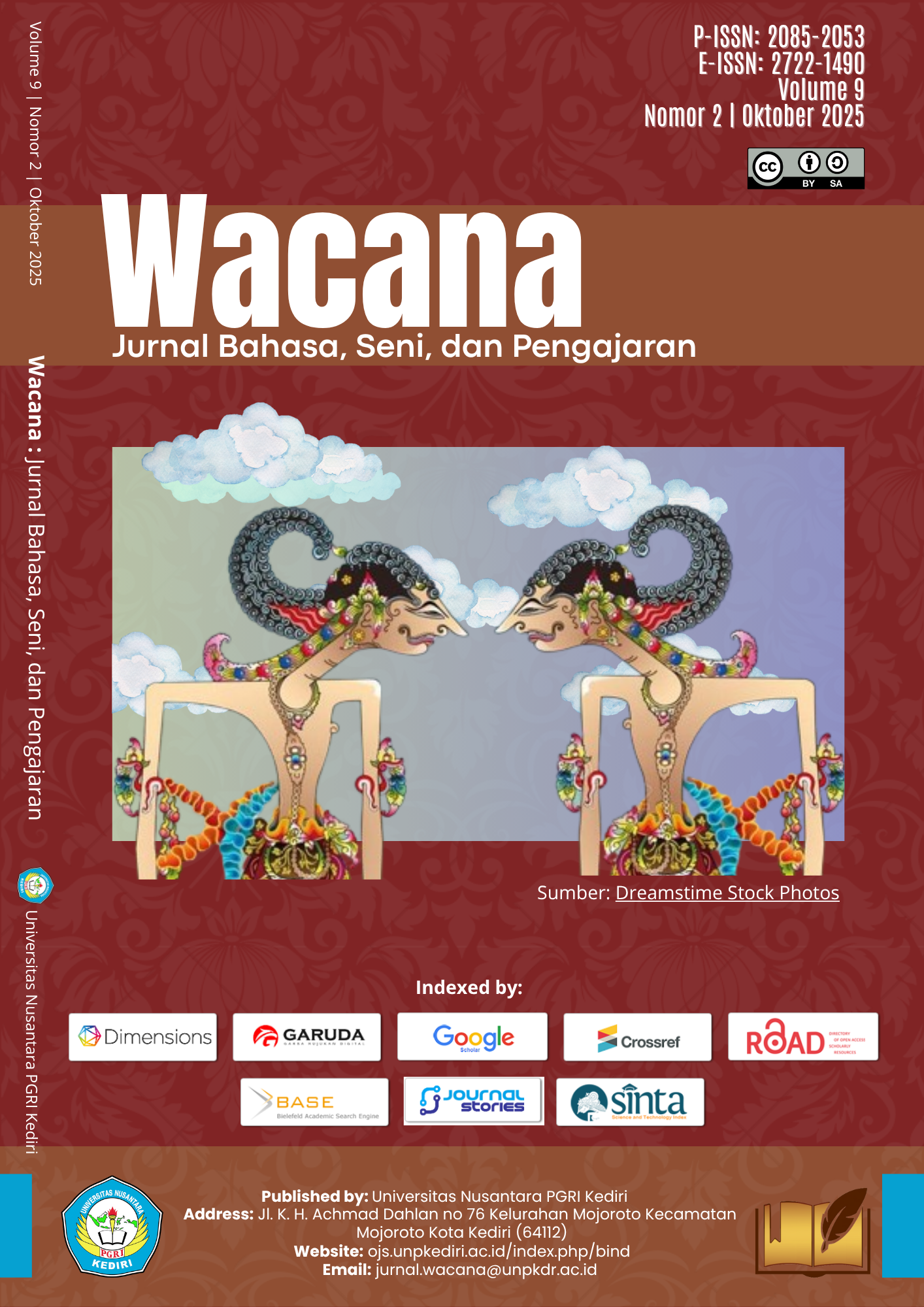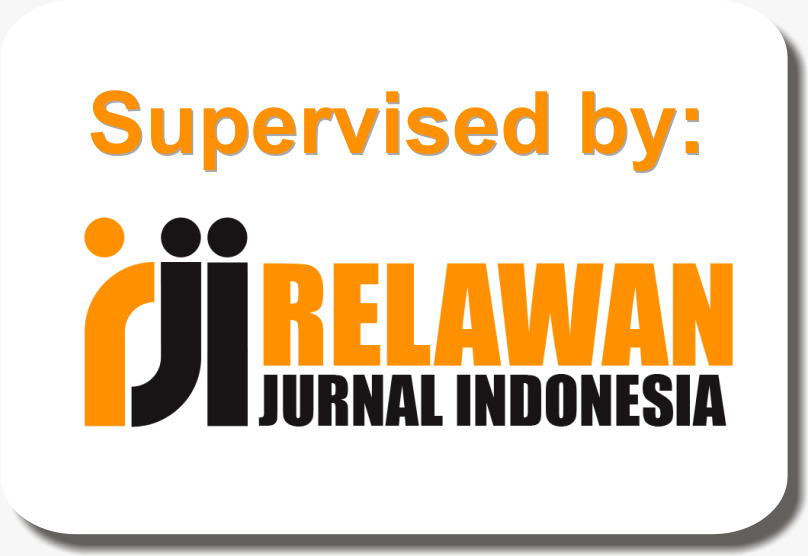Narrator and Modality in Frau Holle's Fairy Tale
DOI:
https://doi.org/10.29407/jbsp.v9i2.5Keywords:
fairy tale, Frau Holle, modality, narratorAbstract
The fairy tale Frau Holle by the Brothers Grimm presents a distinctive narrative structure, featuring an omniscient narrator and a strong moral message conveyed both implicitly and explicitly. This study addresses the characteristics of the narrator and the forms of modality used to construct meaning within the text. The research aims to examine the narrator's role in storytelling and to identify the types of modality it contains. A qualitative method is applied, using content analysis on relevant narrative excerpts from the fairy tale.The results indicate that the narrator is heterodiegetic and omniscient, which allows the narrative to be delivered with seeming objectivity while remaining laden with normative judgments. The dominant modalities are deontic (relating to obligation and prohibition) and epistemic (relating to certainty and possibility). These are used strategically to shape the reader's perception of characters, their actions, and the consequences they receive. Moreover, these modalities reinforce moral values such as hard work, obedience, and justice, which form the foundation of the story's ethical message. This study finds that the narrator and modality play a significant role in shaping meaning, moral evaluation, and the educational function of traditional literary texts.
References
Ahmadi, A. (2019). Metode penelitian sastra. Graniti.
Black, E. (2005). Pragmatic stylistics. John Wiley & Sons.
Carey, M. D., Davidow, S., & Williams, P. (2022). Re-imagining narrative writing and assessment: A post-NAPLAN craft-based rubric for creative writing. Australian Journal of Language and Literacy, 45(1), 33–48. https://doi.org/10.1007/s44020-022-00004-4
Eryon, E. (2011). Satu tinjauan diskripsi tentang modalitas bahasa Inggris dan bahasa Indonesia. Linguistika: Jurnal Pendidikan Bahasa Inggris Universitas Bandar Lampung, 2(2), 146112.
Habsari, Z. (2017). Dongeng sebagai pembentuk karakter anak. Bibliotika: Jurnal Kajian Perpustakaan dan Informasi, 1(1), 21–29. https://doi.org/10.17977/um008v1i12017p021
Halliday, M. A. K., & Matthiessen, C. M. I. M. (2013). Halliday’s introduction to functional grammar. Routledge.
Herrmann, B. (2023). A fairy tale gold standard: Annotation and analysis of emotions in the children’s and household tales by the Brothers Grimm (Vol. 8).
Isaza, P. T., Xu, G., Oloko, A., Hou, Y., Peng, N., & Wang, D. (2023). Are fairy tales fair? Analyzing gender bias in temporal narrative event chains of children’s fairy tales. In Proceedings of the Annual Meeting of the Association for Computational Linguistics (1), 6509–6531. https://doi.org/10.18653/v1/2023.acl-long.359
Lyons, J. (1977). Semantics (Vol. 2). Cambridge University Press.
Mahsun, M. S. (2005). Metode penelitian bahasa: Tahapan strategi, metode dan tekniknya. RajaGrafindo Persada.
Maulana, M. R. (2025). Ambivalence and symbolic dualism in the character of Kumbakarna in the Wayang Golek Lakon "Kumbakarna Gugur": A narrative analysis. Wacana: Jurnal Bahasa, Seni, dan Pengajaran, 9(1), 1–13.
Moleong, L. J. (2016). Metodologi penelitian kualitatif (Edisi Revisi). Rosdakarya.
Müter, S. (2024). To the bottom of Frau Holle's well: Well offerings in the low countries from a comparative perspective.
Nurmala, A. (2019). Aspek modalitas dalam novel "Ayat-Ayat Cinta" dan novel "Dalam Mihrab Cinta". Dinamika: Jurnal Bahasa, Sastra, dan Pembelajarannya, 2(1), 1–9.
Nuyts, J. (2001). Epistemic modality, language, and conceptualization. John Benjamins Publishing Company.
Oftavia, D., Yuniar, E., & Fakhruddin, F. (2023). Citra perempuan pada tokoh Putri Kandita dalam dongeng Nyi Roro Kidul: Pendekatan feminisme. Literature Research Journal, 1(1), 25–35. https://doi.org/10.51817/lrj.v1i1.415
Palmer, F. R. (2001). Mood and modality. Cambridge University Press.
Pond, K. (2016). Becoming a stranger to oneself: Estrangement and narrative voice in Jane Eyre. Bronte Studies, 41(3), 205–215. https://doi.org/10.1080/14748932.2016.1186940
Rahayu, T., Supratno, H., & Raharjo, R. P. (2020). Suara naratif dalam novel Merindu Baginda Nabi karya Habiburrahman El Shirazy (Perspektif naratologi Gerard Genette). SASTRANESIA: Jurnal Program Studi Pendidikan Bahasa dan Sastra Indonesia, 8(2), 114–121.
Rimmon-Kenan, S. (2003). Narrative fiction: Contemporary poetics. Routledge.
Rukiyah, R. (2018). Dongeng, mendongeng, dan manfaatnya. Anuva, 2(1), 99–106. https://doi.org/10.14710/anuva.2.1.99-106
Sari, L. E., Waryanti, E., & Muarifin, M. (2022). Pendidikan budi pekerti cerita rakyat "Malin Kundang dan Sangkuriang" pada saluran Channel Youtube karya Riri Kampung Dongeng. Wacana: Jurnal Bahasa, Seni, dan Pengajaran, 6(1), 39–48. https://doi.org/10.29407/jbsp.v6i1.18324
Sayer, I. M., Kristiawan, M., & Agustina, M. (2018). Fairy tale as a medium for children’s character cooperation building. Al-Ta Lim Journal, 25(2), 108–116. https://doi.org/10.15548/jt.v25i2.458
Simpson, P. (2003). Language, ideology and point of view. Routledge.
Suri, I. (2019). Menyelisik peran narator dalam novel Noruwei no Mori karya Haruki Murakami. Jurnal Ilmiah Langue and Parole, 3(1), 28–33.
Watson, C. W. (2023). Minangkabau male angst and the autobiographical mode: Darman Moenir’s Bako. Indonesia and the Malay World, 51(150), 165–190. https://doi.org/10.1080/13639811.2023.2199643
Zahro, A., & Indrastuti, N. S. K. (2024). Suara naratif dalam Na Willa karya Reda Gaudiamo: Perspektif naratologi Gerard Genette. GHANCARAN: Jurnal Pendidikan Bahasa dan Sastra Indonesia, 6(1), 53–70.
Downloads
Published
Issue
Section
License
Copyright (c) 2025 Alvidya Nisa Utami, Ina Ika Pratita, Riki Nasrullah, Syamsul Sodiq, Wisma Kurniawati

This work is licensed under a Creative Commons Attribution-ShareAlike 4.0 International License.













